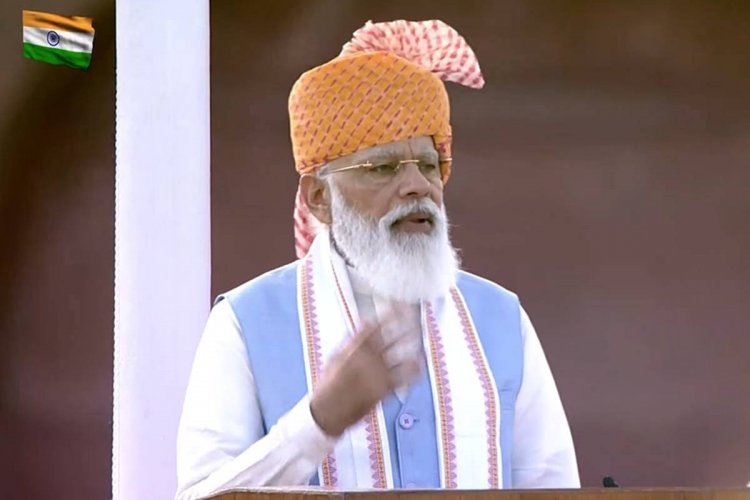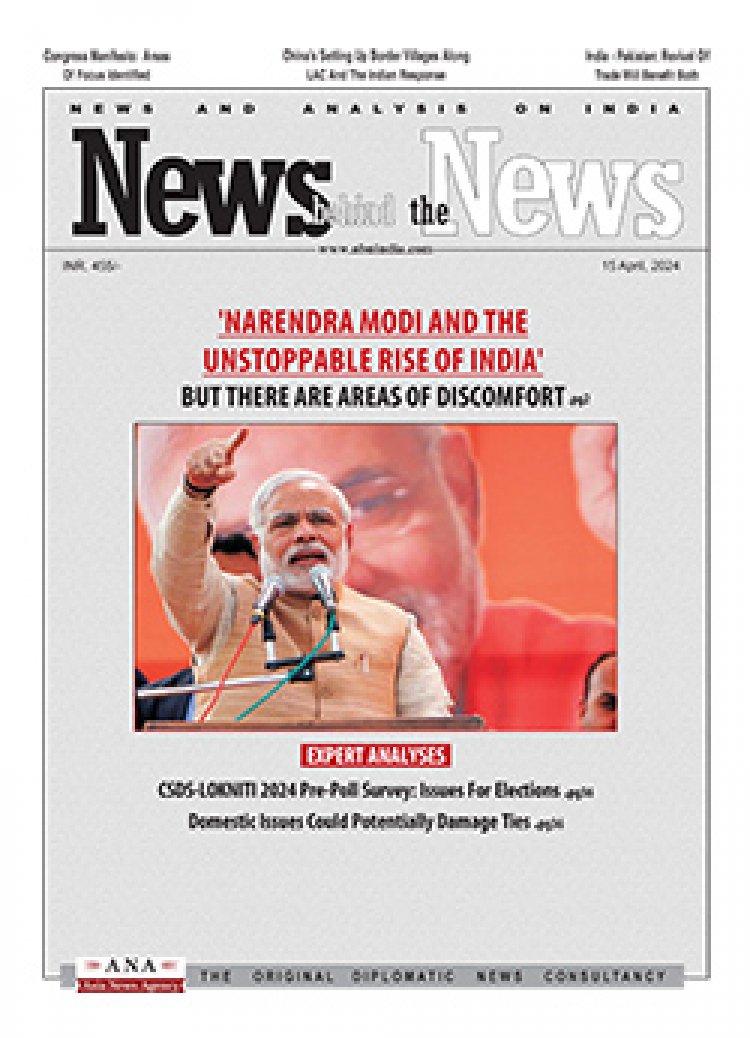PM Modi’s Independence Day Speech: Challenges Ahead
STORIES, ANALYSES, EXPERT VIEWS

A theme to Prime Minister Narendra Modi’s Independence Day address from Red Fort was: The nation cannot wait any longer. This is the right time, was the refrain, in his speech, writes The Indian Express “that urged a pause in the nation’s journey of progress for a rededication and renewal of resolve, hard work and valour. And he set urgent timelines.”
The PM’s speech was “marked by an urgency that was insistent and striking. And audacious. After all, this speech was set against a much darker backdrop of distress and decline…..In this dismal setting, it was audacious and ambitious — or perhaps strategic — for the prime minister to use the I-Day podium to talk about a makeover, frame the Big Idea, set a deadline.”
The Big Idea
There were many big ideas. The PM spoke of a new marker of success of the governance scheme — hundred per cent delivery to beneficiaries. A developmental effort that touches all, would require handholding of some sections, he said, among which he emphasised the OBC (Other Backward Classes). The underlining of his government’s commitment to the OBCs says the Indian Express “was also a political statement with an eye on impending assembly elections” with the PM pointing to the recent extension of the OBC quota in the all-India seats of medical colleges, passing of the bill to give states the power to frame their own OBC lists, and earlier, to give constitutional status to the National Commission for Backward Castes.
The PM spoke of recognising cooperative-ism alongside socialism and capitalism. He spoke of a master plan for a renewed push for employment and holistic infrastructure creation, which would reach into Tier 2 and 3 towns to tap the start-ups and unicorns, the new wealth creators. And the need to get the government to roll back unnecessary interference in citizens’ affairs. There was a time, he said, when the government sat itself down on the driving seat, and it was also the need of the hour. But that period is over and it is the moment now to move ahead without the burden of outdated laws and a million compliances.
The sovereign in India is really the State, not the people
Independence Day is also a time for reflection on the Constitution, the document which says Indians are sovereign. Anand K. Sahay, senior analyst questions this. “The sovereign in India is really the State: the government and all the apparatus it controls. It’s not the people. The people are useful for the State as they give it legitimacy, but they are also seen as a nuisance that gets in the way of government. It’s for this reason the Constitution has been severely undermined over the years. It’s true this has happened under all governments but it’s equally true this has particularly accelerated under the present one. This has happened in three ways. First, through the attack on fundamental rights. Though these are constitutionally guaranteed, the rights to equality, freedom of expression, occupation, religion, movement, assembly and association and the right to life and liberty do not exist in India in any meaningful way……..”
Economic distress: high unemployment
While there is a serious debate on constitutional guarantees to freedom, there are issues concerning the economy that need to be brought to focus on the occasion of Independence Day.
India’s economy, writes Renu Kohli (macroeconomist) “is confronted with one of its most challenging times. Economic growth, which was slowing down from 2017-18, slipped into its deepest-ever trough last year. It is a misfortune that the once-in-a-century pandemic struck when the economy was already too weak — before the pandemic, in 2019-20, it grew 4 per cent, a rate reminiscent of the early decades after Independence. The celebration of 75 years of the economy is sobering: growth is struggling to emerge from the virus’s second onslaught in the last quarter, while rising prices and high unemployment push daily lives to the brink economically……..
“In spite of decades of reforms, the share of manufacturing in the gross domestic product has stagnated at around 15-16 per cent. The economy has been powered on the strength of the expansion of services; this has underpinned much of its high growth rates…….” But “services have also generated employment but can never match the scales possible by mass industrial production that serves both domestic and foreign markets…… What is significant is that the missing stage of manufacturing extension in India’s development has kept disproportionately high numbers of its labour force engaged in agriculture (or ‘disguised’ unemployed because this remains unobserved) as employment growth has been too slow.
“Weaker growth for several years, aggravated by the pandemic, has compounded unemployment. For example, the national unemployment rate has persisted at 8.8 per cent since 2017-18 according to the aggregate employment profile captured by the Periodic Labour Force Survey for July 2019-June 2020; this is under the ‘current weekly status’ category that asks if adequate employment was available in the week before the survey. However, because the economic base is very large, this distress has not been so perceptible.”
















